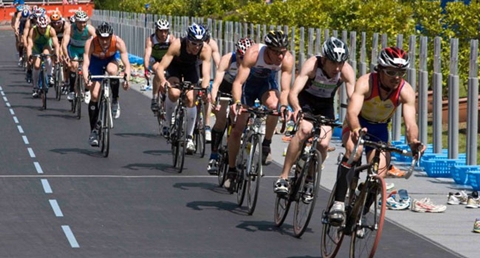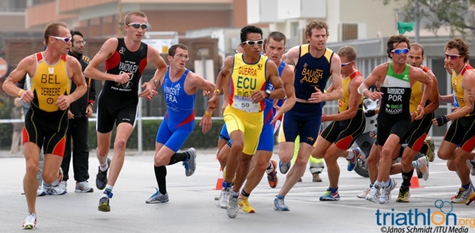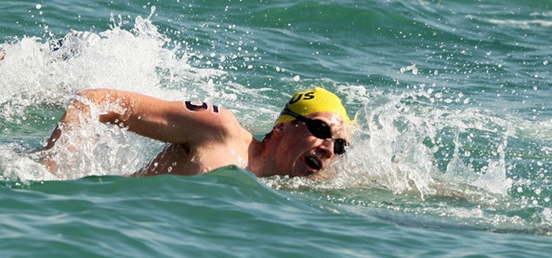Rest will help you maintain an ongoing exercise regime
Over-training is something I see a lot of people do, especially when the New Year rolls around and they are super excited and committed to getting fit. They work themselves so hard and long that they are always stiff, sore and fatigued. They seem to be punishing themselves for eating rather than exercising. This usually leads to burnout and often they stop exercise all-together. Learn to pace yourself and remember to keep a balance between working hard, and getting the proper rest to help your body function optimally. This will help you maintain an ongoing exercise regime.
While good training is important, any advanced athlete will tell you that rest and recovery is as important if not more important to your success as an athlete. Rest allows your muscles to “heal” and adapt to the stress from training hard. If you are getting the proper rest you will allow your body the time it takes to re-build, regenerate and recuperate to get ready for the next hard training session. So it’s okay to just kick-up your feet and “chill” sometimes. Here are some suggestions on ways to get rest and recovery.
Complete Rest. Incorporate complete rest into your training regime on a regular basis.. This complete down-time allows you to have a physical as well as mental break. I like to take one full rest day off (no exercise) every week. This can prevent overtraining, burnout and keeps you motivated. Exercise becomes a “treat” when you don’t do it day-in and day-out. Some regular complete down-time is a good thing.
Active Recovery. Rest doesn’t always mean taking it off completely. It can mean not going hard all of the time. Utilize active recovery techniques such as a low-intensity run, ride, easy swim, walk, hike, or a yoga class can restore blood flow to the muscles and help them recover faster. This type of workout can be done each week to allow recovery time and work out muscle soreness and should be done after/before hard training days.
Training hard when your muscles are tired, fatigued and not well-recovered can lead to injury and is usually a waste of time. Active recovery can aid the muscles during the recovery process. Well rested muscles respond better to training and will be much more effective to help you get faster and reach your goals.
Cross-training. Running becomes a “treat” when you don’t do it everyday. Incorporating other exercises into your training can give your muscles a break and prevent overuse injury from the same repetitive movement (most commonly seen with runners). I always suggest cycling, swimming and/or yoga to my athletes especially runners. These exercises can help with flexibility and develop the upper body strength often lacking in runners. As a late blooming triathlete this cross-training has been a welcome change for me and adds the variety needed to keep my body balanced and mind refreshed.
Take an “off-season” Break each Year. Being a runner and triathlete I train all year ‘round. But I find it helpful to allow myself to have an “off-season” each year. It’s usually after all the triathlon races wrap up for the year in Utah and the racing season slows down.
Here’s some advice I recently offered my triathlon team. It is best to stay active to maintain conditioning during the off-season. You don't need to push really hard but get some aerobic exercise at least every other day. Allow yourself to just enjoy exercise for what it is...no watch or numbers - just go to enjoy a run or ride. Allow yourself time to enjoy other fitness activities you haven't done for a while too (rock climbing, hiking, golf etc...).
Depending on the person the "off-season" can last for several weeks or maybe a few months. I would recommend 2-4 weeks for most. Be sure to continue to eat healthy and balanced as the holidays approach. The”off-season” is a time to mentally and physically rejuvenate. Well rested muscles and a refreshed mind will respond better to training.
Get a Massage. Years ago I used to think massage was just an extra, but now I have learned how much it helps me recover. Having someone that is professionally trained to work out the knots, adhesions and release the tension from the muscles has helped me to heal and function on a daily basis. I believe massage also helps prevent injuries and aids recovery by restoring blood flow to the muscles. I feel it helps me tolerate the heavy workload that is required to be a top performing endurance athlete. Ice massage and SMR techniques with a foam roller can also be a useful for recovery.
Summary. Remember to utilize complete rest, active recovery workouts, cross-training, a scheduled “off-season” and massage to help your muscles heal and keep the mind re-fresh to maintain an exercise regime and reach your’ maximum potential. While we didn’t talk about it in this article, getting proper nutrients and hydration as well as sleep is also important for recovery..
Live well!
Lora Heyl Erickson is a competitive runner and triathlete with over 26 years of experience and studied Nutrition at Utah State University. While at Utah State University, Lora was the Running Team Captain and Big West All-Conference runner. She is the owner of Blonde Runner Health, LLC in Bountiful, Utah where she currently resides with her husband and four children. As a USATF certified running, coach Lora has worked with hundreds of athletes helping them reach their full potential.






